„En Condor over Danmark!“ The Fw 200A "Jutlandia" in service with DDL
Coincidences, especially chance encounters, are a popular literary topos to start great stories. The already legendary story of the Fw 200 Condor can also boast such an incident: in March 1936, Dr Kurt Tank, who had recently become head of development at Focke Wulf in Hamburg, and Dr Rudolf Stüssel, who was Lufthansa's technical director, met by chance while waiting for their respective connecting trains at Franzensfeste station south of the Brenner Pass and got talking. In a relaxed mood, both were on their way back from holiday trips, they finally got to talking about professional matters.
Both gentlemen shared a common concern: at this point in time, a generational replacement in civil aviation had been completed in some parts of the world, which had not even really begun in Germany.
Disturbing news had come from the United States in particular. Groundbreaking designs such as the thirteen-seat, twin-engine Boeing 247 reached a top speed of 293km/h, the Lockheed Orion was flying at an outstanding 360km/h, and as early as 1934, TWA's DC-2 had entered regular service. This groundbreaking design transported 14 passengers in a comfortable cabin at a respectable 343km/h over long distances. A comparison with contemporary fighter planes illustrates how impressive - and, from a German point of view, disturbing - these performances were: France's fastest fighter plane, the Dewoitine 501, reached a top speed of 308km/h, in Great Britain the Hawker Fury I marked the top of the field with 360km/. The Heinkel He 51 did not make too impressive a picture either, at 330km/h.
Speed, however, was not the only impressive feature of the new generation of passenger and transport aircraft. The US designs also broke new ground in terms of the materials and technologies used. Whereas until then the scene had been dominated by fabric-covered or metal-planked frame constructions made of wood or tubular steel, the models from Boeing, Douglas or Lockheed featured the most advanced self-supporting fuselage half-shells made of light metal, and of course retractable landing gears and fully glazed cockpits in aerodynamically clean fuselages had become standard in this class. Germany had nothing comparable to offer in the civilian sector.
Another thought dominated the conversation between Tanks and Stüssel: the long-haul routes, especially those across the Atlantic, were emerging as future lucrative routes - here, too, Germany had no design that could keep up at that time. In addition, since the National Socialists came to power, military projects were given priority, so that the capacities of the large manufacturers were fully booked with projects for the Luftwaffe. In contrast, the RLM hardly invested in new civilian developments. Existing projects such as Heinkel's He 70 lacked both capacity and range, while established models such as the Ju 52 were inferior in terms of technology and performance. What was urgently needed was a large four-engined long-range aircraft that could be used safely and reliably on long-haul routes. Tank and Stüssel parted company with the intention of getting this project on track as a matter of urgency. In fact, Kurt Tank already had a name proposal ready: the new design was to be called "Condor" after the great Andean bird.
Immediately after the return of the two decision-makers, the first plans for the new large aircraft began in Bremen. A team around Otto Papst, Max Mayer and Wilhelm Bansemir started with the first calculations, and later the group was strengthened by Andreas von Fachelmann and Ludwig Mittelhuber. Lufthansa also remained loyal to the project developed by the two aviation greats and expressed serious interest. When, in April 1936, only a month after the chance meeting at Franzensfeste, the fully calculated project documents were submitted to Lufthansa, a conclusion was quickly reached: Carl-August Freiherr von Gablenz, director of Lufthansa, placed a construction order for the first two Fw 200 Condor.Gablenz had previously reserved the attractive type number "200" with the "Reichsluftfahrtministerium" because of PR-reasons.
Another anecdote can be added here: when the contract was signed, Lufthansa director Kurt Tank had allowed two years for development, probably taking into account the fact that Focke Wulf had never built an all-metal aircraft before.However, Kurt Tank, who was obviously convinced of the idea and self-confident, bet Gablenz 25 bottles of champagne that the Fw 200 would make its maiden flight within a year. Amazingly, it was indeed the Lufthansa director who had to pay for the champagne: on 27 June 1937, the first of two prototypes took off on its maiden flight and only a year later, from mid-1938, the first Fw 200 Condor could be taken over into Lufthansa's scheduled service.
Even in the year of its introduction, the Fw 200 Condor made a name for itself with a series of highly regarded record-breaking flights. Worthy of special mention is the fast Atlantic crossing from Berlin Staaken to New York's Floyd Bennett Field in 24 hours, 56 minutes and 12 seconds, which Fw 200V1 D-ACON undertook on 8 August 1938. In November, the same aircraft flew to Tokyo via Basra, Karachi and Hanoi. The fact that the return flight of the D-ACON ended in an emergency ditching in Caribe Bay off Manila did not diminish the reputation of the Fw 200; the pictures of the accident may even have contributed to the fame of the impressive design.
The peaceful use of the Fw 200 was to be short-lived, however: at the outbreak of war, all aircraft had to be handed over to the Luftwaffe. The subsequent military versions proved that, despite all its initial operational successes, the large Condor was not the great success either as a transport or as a maritime reconnaissance aircraft it had been as a long-range passenger aircraft,
In the light of the data on the US aircraft given at the beginning, it is interesting to note comparable data on the Fw 200 Condor. The four BMW 132 nine-cylinder radial engines, each with 830 hp, enabled a cruise speed of 280 km/h and a top speed of 405 km/h respectively.The range was decisive for the intended use of the new Lufthansa aircraft: an Fw 200 in the A/B versions could fly a maximum of 1720 kilometres.
The dimensions make it clear what a large aircraft the Fw 200 was: the length of the Condor measured 23.85m, the wingspan was 32.84m. The empty weight is given as 11296kg, the normal take-off weight was around 17 500kg, while the maximum take-off weight was 18 000kg. Four crew members, divided into pilot, co-pilot, radio operator/mechanic and steward, were necessary to adequately transport the 26 passengers on long-haul routes.
10 machines had been ordered directly by Lufthansa, but in addition, as already mentioned, the Luftwaffe also showed interest: a total of 24 machines of the early versions A and B were ordered as courier and transport aircraft.
The new design seemed interesting for export: two Condors went to the Brazilian "Syndicato Condor", another two machines were delivered to the Danish airline Det Danske Luftfartselskab (DDL).
One of these two aircraft, the Fw 200 A produced as serial number 2993, is shown in the model presented here. The aircraft arrived in Copenhagen in July 1938 and was to be used in the following years with the registration OY-DEM and under the name "Jutlandia" by DDL on the Copenhagen - Amsterdam - London route together with the second aircraft, the OY-DAM "Dania".
After the outbreak of war, both aircraft continued to be used by neutral Denmark on this route, but out of an abundance of caution they were repainted with large Danish flags and "DANEMARK" lettering on the fuselage, and - at times - a bright orange livery. Literally on the eve of the German invasion of Denmark, the British took over OY-DAM after it landed in Shoreham, England, and continued to operate it under the BOAC flag. In 1943 the aircraft was completely destroyed in a German air raid.
The OY-DEM shown here, on the other hand, survived the war and was again used in DDL scheduled service after 1945 until it was damaged in a crosswind landing in Northolt, England, in the autumn of 1946. Fw 200A "Jutlandia" was finally scrapped in 1947.
About the kit and the building process
The parts of Revell's Fw 200A should actually be the oldest kit forms I ever had the honour to hold in my hands: with the year of publication 1965 they can be dated to the late antiquity of model building. So it is not surprising that the representation is very simple and in some parts - I'm thinking especially of the engine nacelles/exhaust guide/chassis - only vaguely like the original. On the other hand, the kit lacks completely and very pleasantly the toy-like quality of some exhibits of this era.
I was able to check the dimensional accuracy of the parts by comparing them with plans in 72 scale and can give the kit a very positive report: the dimensions seem to be well hit!
The construction itself was quite entertaining and progressed quickly: on the one hand, I did without any depiction of the interior of the fuselage and concentrated on the detailing of the cockpit, on the other hand, I took the liberty of using Eduard's etched part sets of the military C variants for the more detailed design of engines, landing gear and cockpits. The aerial system, the exhaust pipes and the pitot tube (not included in the kit) were completely rebuilt.
Much attention and planning was required to use the markings from "Lima November Decals: Fw 200A Part 1" needed for the Danish machines. These are of excellent quality and produce a very coherent, beautiful overall appearance. However, the red areas must be painted before the hair-thin black borders are applied as decals to their contours. This requires, as can easily be imagined, a well-planned and calmly executed procedure: I created adhesive masks that were exactly appropriate to the contours and gradients of the black border lines. In the end, I was relieved that this procedure led to quite a respectable result, because the sleek red markings of OY-DEM "Jutlandia" look, in my opinion, particularly good on an Fw 200A!
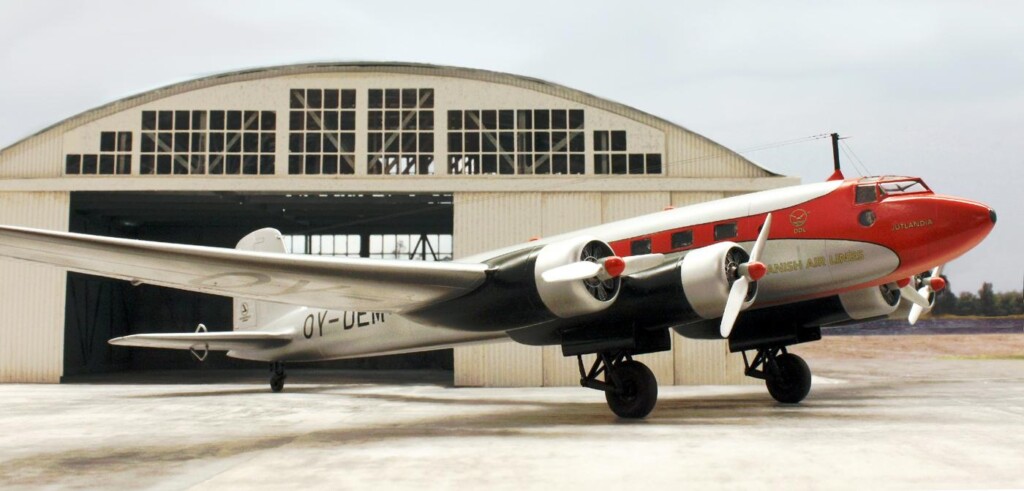
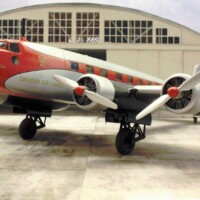
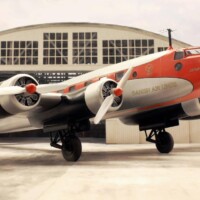
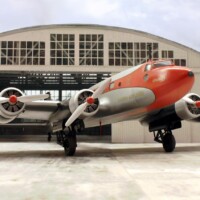
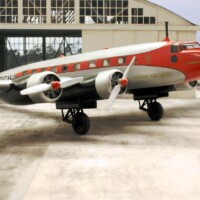
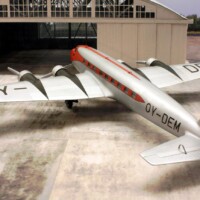
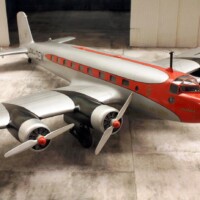

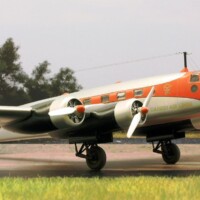
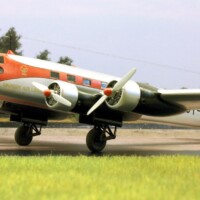
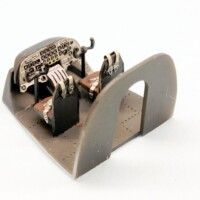
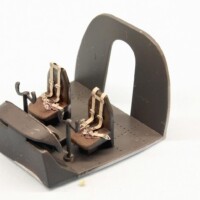
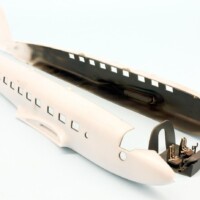
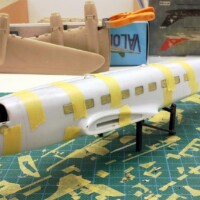
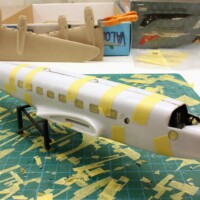
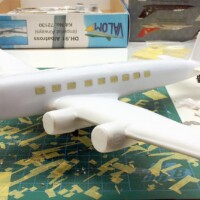
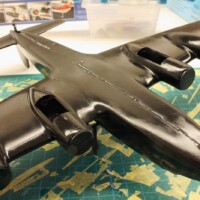
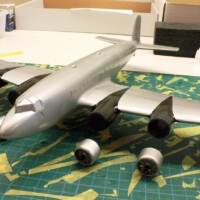
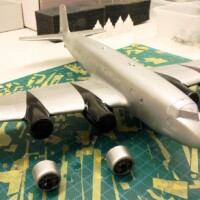
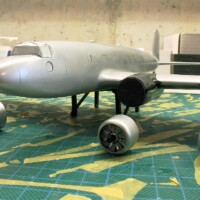
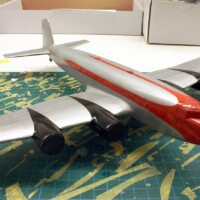
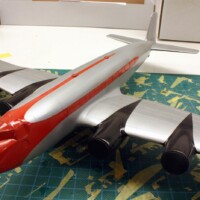
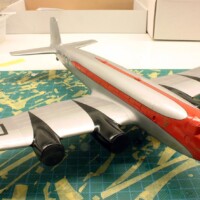
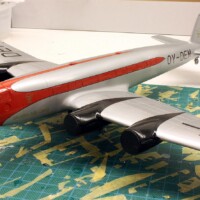
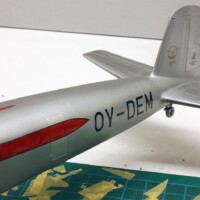
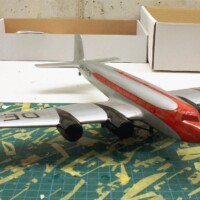
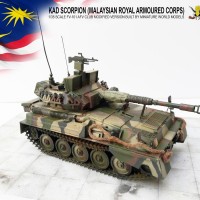
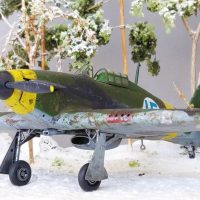
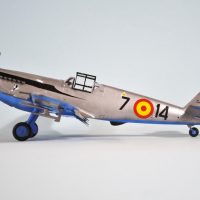
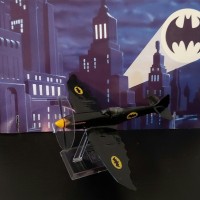
Superb modeling and photography!
An amazing result over the elderly Revell kit, Roland! The accompanying article is also a joy to read!
Indeed, the Condor looks extremely charming in this livery.
Well done!
The great bird looks fantastic. The Condor has to be one of my favorite shaped 4-engine WWII aircraft - just has a majestic look to her.
beautiful work, beautiful photos and very interesting story. thanks for sharing
Stellar work Roland, indeed one of the nicest “Condor” I’ve seen
That's a spectacular build - nice work on that old kit. Nice job with the black lines and great photos. And an interesting backstory!
You performed great on this elegant shaped Condor, Roland @rosachsenhofer
Spectacular build and ditto photographs.
Thank you for adding this interesting background article.
Excellent results from your careful work on this Fw-200! The photography and history of the Condor are very good. Too bad this aircraft had such a short operational life as an airliner, it might have given the big US companies some competition.
Now that’s sharp, Roland!
That's a really impressive result. It looks every inch a prestige airliner and I enjoyed the comprehensive article very much.
Absolutely a gorgeous model and well researched text. Another winner Roland. That hanger background adds a lot of depth as well.
Ditto from me, Roland (@rosachsenhofer). Spectacular results, both inside and out. Getting the paint and markings done must have really taken some time and patience. A big well done getting an elderly kit to look this good.
An excellent job, man!
Love your approach to this one👍👍
I bought this kit as clearance stock 20 years ago ,
Thank you for the inspiration to build it.
Roland, Beautiful build on a very attractive scheme !
It really is a pleasure and a great motivation to receive such positive feedback from such a diverse and knowledgeable group of modellers - thank you for your interest and interesting comments! Ich danke Euch! Thank you!
Super modelling Roland, write up and photography just wonderful 👍
Thank you Guy!
What a brilliant result, Roland @rosachsenhofer! 👏 That is one handsome aircraft and a sensational model from that old kit. I so enjoyed your history lesson too, and will be looking forward to your next article! 🍺
A comment that gives me motivational joy - thank you!
Another great result from RO Sachsenhofer Industries Ltd.!
Always a pleasure, thanks Tom!
Thanks for sharing this with us, Roland. A marvelous write-up and great photographs. Your enthusiasm and knowledge for the subject really show in the finished model.
I say thank you very much!
Just shows what an old kit can yield in the hands of a great modeller.
Thank you very much, Marcello!